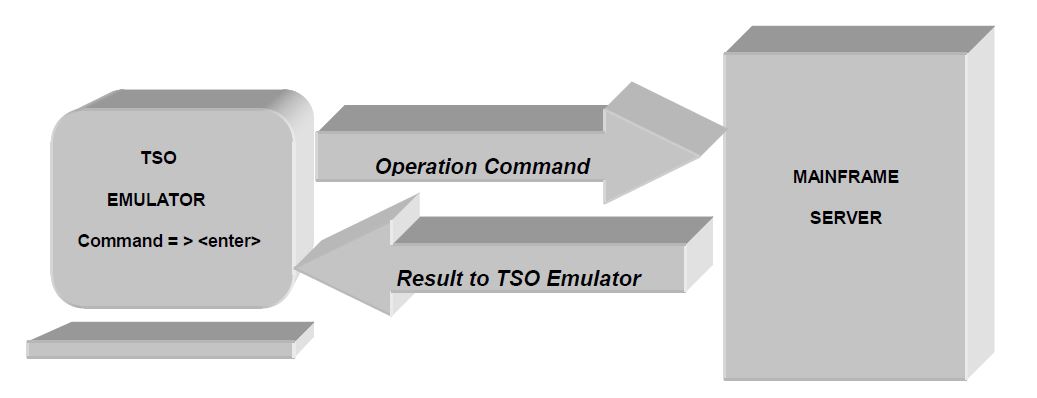TSO-ISPF Introduction
Interacting with z/OS - TSO-ISPF Introduction:
z/OS is ideal for processing batch jobs-workloads that run in the background with little or no human interaction. However, z/OS is just as much an interactive operating system as it is a batch processing system. By interactive we mean that end users (sometimes tens of thousands of them concurrently) can use the system through direct interaction, such as commands and menu style user interfaces.
In z/OS, the facility known as Time Sharing Option/Extensions or TSO allows multiple users to log on and interactively share the resources of the mainframe. TSO also provides users with a limited set of basic commands; using this set is sometimes called using TSO in its native mode.
ISPF is a menu-driven interface for user interaction with a z/OS system. The ISPF environment is executed from native TSO. ISPF provides utilities, an editor and ISPF applications to the user. To the extent permitted by various security controls, an ISPF user has full access to most z/OS system functions.
TSO/ISPF serves as both a system management interface and a development interface for traditional z/OS programming.
What is TSO?
Time Sharing Option/Extensions (TSO/E) allows users to create an interactive session with the z/OS system. TSO provides a single-user logon capability and a basic command prompt interface to z/OS.
What is ISPF?
ISPF is abbreviated as "Interactive System Productivity Faciliy". ISPF is a full panel application navigated by keyboard. ISPF includes a text editor and browser, and functions for locating and listing files and performing other utility functions.

For Mainframe to perform some operation you need to instruct or inform mainframe through terminal device. For example: In Windows, if you need to shutdown, instruction is given to operating system through interface provided (through Start Menu -> shutdown button).
Each operation to be performed by Operating system will have its own interface menu. Similarly, to interact with Mainframe Operating System (MVS), interface provided is TSO (Time Sharing Option).
| SYSTEM | Personal Computer | Mainframe |
|---|---|---|
| Operating System | Windows, XP | MVS,Z/OS |
| Data | File Folder | Dataset PDS |
| Interface (Command Line) | DOS | TSO |
TSO role as subsystem:
As stated, TSO is needed to invoke MVS (operating System) facilities interactively.
TSO Functions:
TSO Functions are broadly categorized into four types. The utilities which are explained in following sessions will be used for performing these functions:
-
Data set Management Functions:
- Dynamically allocate data sets
- List, Print, Copy Delete, Rename data sets
- List catalog entries
-
Program Development Functions:
- Create and edit program source libraries
- Compile a source program
- Link-Edit a compiled program
- Test a link–edited program
- View Compiler and linkage editor output
- Route output to a printer
-
Batch Job Functions:
- Submit a job for background processing
- Monitor the progress of a background job
- View output from a background job
- Route output to a local or remote site
- Cancel submitted jobs
-
Other TSO Functions:
- REXX, CLIST, Message broadcast and Help facility
If you have any doubts or queries related to this chapter, get them clarified from our Mainframe experts on ibmmainframer Community!
Are you looking for Job Change? Job Portal